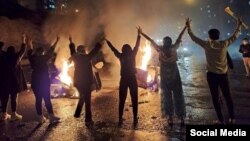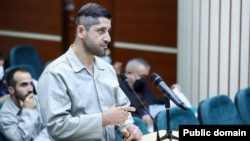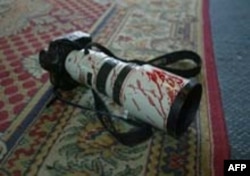
The whereabouts of five female university students in the western Iranian city of Sanandaj are unknown following their arrest earlier this month after they took part in a rally against the execution of protesters, the Union Council of Iranian Students said.
The women were arrested by security forces between December 10 and 14, and the council said no information has been released about which security agency arrested them or their whereabouts and condition.
The council called their detention a kidnapping.
Bita Veisi was the first to be arrested after the rally at Sanandaj Technical College on December 10 in protest of the execution of Mohsen Shekar two days earlier. The students chanted slogans demanding the return of his body and "Death to the dictator."
Video images released later the same day purportedly show that the students left the campus after an attack by security forces and continued their protest in the streets of the city.
Shekari was executed after an appeal of his sentence on a charge of injuring a security officer was rejected by the Supreme Court. Human rights groups said Shekari's sentence was based on a coerced confession after a grossly unfair process and a sham trial.
The other four women -- Tina Khedri, Sana Khodamoradi, Rezvan Bazaniqaleh, and Hanieh Chahardoli -- were arrested by the security forces in front of the university dormitory without a judicial warrant.
The unrest sparked by the death of 22-year-old Mahsa Amini while in police custody has swept the country over the past three months.
Amini died after being detained for allegedly wearing a hijab improperly. Eyewitness reports said she was beaten while being arrested by police, while the authorities said she died of "underlying diseases."
Security forces have waged a violent crackdown on protesters around the country, killing scores, injuring hundreds, and detaining several thousand people.
As the scattered antigovernment protests rage across Iran for a 12th week, universities and schools have become the main venue for clashes between protesters and the authorities.
The activist HRANA news agency said that as of December 15 at least 637 students had been arrested during the unrest.
Several reports during the past three months have been published about the bodies of dead students being found at various universities, including those in Shiraz, Ahvaz, and Tehran.
In the latest case, relatives of Donya Farhadi, a student living in the southwestern Iranian city of Ahvaz, said on December 15 that after she disappeared for a week her body was found by the Karun River.
In most cases, the authorities say the cause of death of these students is an accident, suicide, or fall from a height without providing further details.


